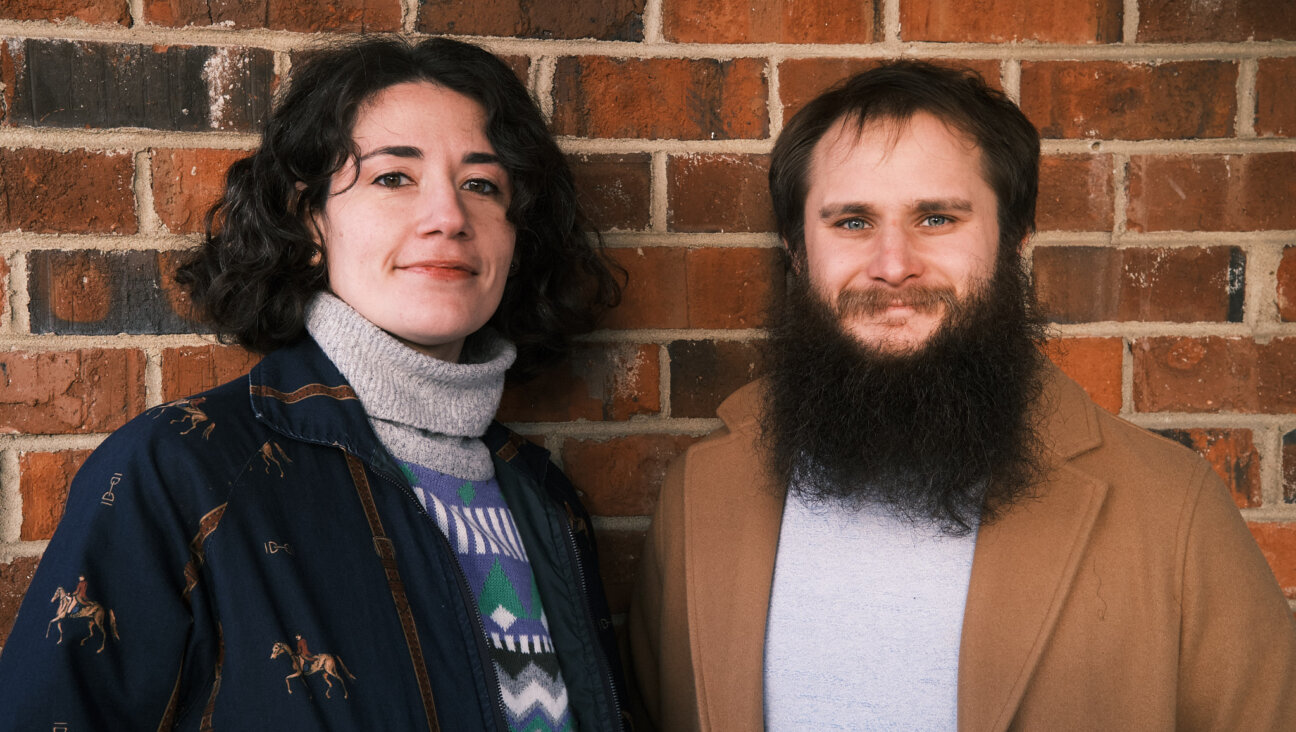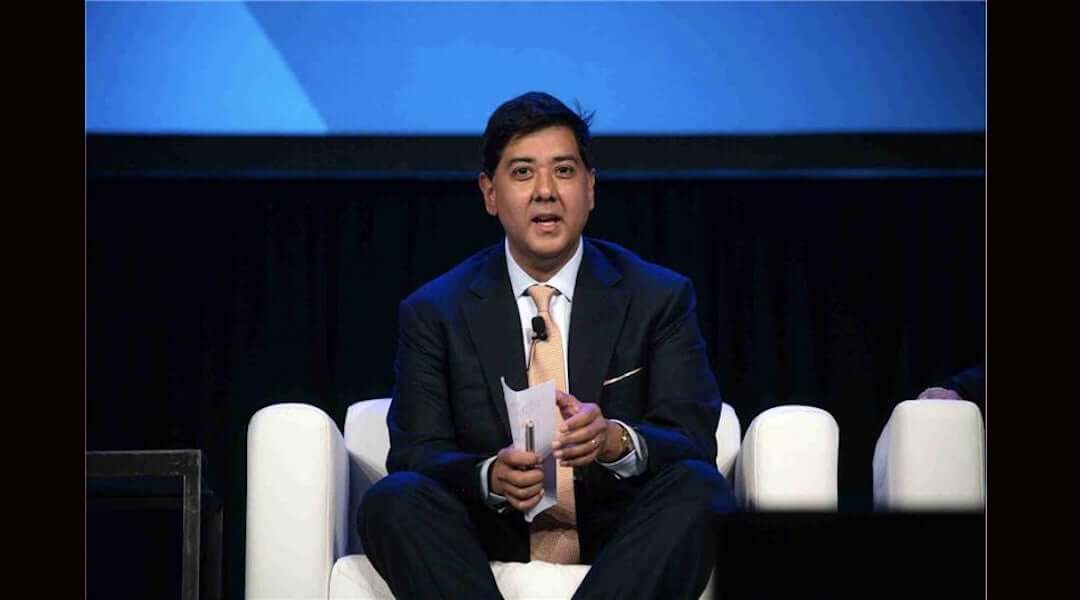The Mikveh in My Backyard

Graphic by Angelie Zaslavsky
The site of the Chesterfield synagogue
I’m walking towards a wooded lot almost hidden by what passes for a busy intersection in rural eastern Connecticut. The road has no shoulder, so I try to stay as close as possible to the curb. This is not a place designed for pedestrians, and I wonder what passing drivers are thinking about me as I head up the hill away from the one gas station, the one store, and the one motel.
Last summer, the spot I’m walking towards — a seemingly abandoned tract in the Chesterfield section of the town of Montville — got a brief burst of media attention when archeologists excavated a mikveh, constructed here in the late 19th or early 20th century. For years, I lived a short drive from this very spot. I always liked the feel of the area, the way the suburbs seemed to fade into sparsely populated, history-suffused wilderness. I just never thought that history pertained to me.
I duck under bare, prickly tree branches and make my way across the soggy ground towards a stone monument that reads: Site of the Chesterfield Synagogue 1892-1975.
In the early 1890s, the Baron de Hirsch Fund helped a group of Jews — recent immigrants from Eastern Europe fleeing New York’s overcrowded Lower East Side — establish a farming settlement in this small town about 10 miles north of New London. They sold dairy products and later ran a summer resort, their population briefly reaching 500 before declining around World War II when the younger generation moved away.
These Jewish farming colonies, located across Connecticut and New Jersey as well as in Canada and beyond, are often described as a forgotten chapter in history. In fact, much is known about them. Their inhabitants did not come from farming backgrounds and often lived in poverty, but many achieved brief –— and in a few cases not so brief — success. They lived beside neighbors whose disposition toward them ranged from curious to xenophobic to occasionally hostile. It is commonly believed, when they came to the New World they left the traditional aspects of Jewish life behind.
But Professor Stuart Miller, Academic Director of the Center for Judaic Studies and Contemporary Jewish Life at the University of Connecticut, told me that he believes the existence of the mikveh in Chesterfield could drastically change that perception. The existence of a Jewish ritual bath at the site of the Chesterfield settlement, which once included a school, a creamery, and the synagogue (destroyed in 1975 in an unsolved arson), was not a surprise to members of the New England Hebrew Farmers of the Emanuel Society a group comprised of descendants of the original settlers. They were aware that in the basement of the former house of the shochet, or ritual slaughterer, there was a mikveh. But their efforts had centered on getting the site added to the state and national registers of historic places, and reaching out to other descendants. They “didn’t realize, and how could we,” said Nancy Savin, President of the NEHFES, “that [the mikveh] might be of national significance.”
When Connecticut State Archeologist Nicholas Bellantoni first arrived on the scene in 2006, he didn’t realize it either. More familiar with Native American burial sites than Jewish dairy farms, Bellantoni was aware that he was looking at a mikveh. But it wasn’t until he contacted Miller, whose long time professional focus was ritual baths of antiquity, most notably at Sepphoris in Israel, that everything came together. When Miller drove to the nondescript location (it was “not on the GPS,” he told me) and Bellantoni showed him the stone steps leading down to the mikveh, he recalled, “My jaw dropped.” They began planning a dig almost right away, and in the summer of 2012 they led a team of students in an excavation of the steps, the stone pool, and the path along which water once flowed into the bath through a pipe. According to previous scholarship and popular belief, these Jews were not likely to have had a mikveh at all. Rabbis at the time were lamenting the steep decline in observance of ritual purity laws. Based on their writings, Miller said, “To find a mikveh in Chesterfield, that’s just mind-boggling.” He is convinced the unveiling of the ritual bath requires a deeper look at a people who have long been depicted as trying to assimilate as fast as possible. The Chesterfield community, he says, put the “emphasis on retaining their traditions.”
Standing in the clearing by the synagogue memorial, I try to overlay what I know about the place’s past onto its present appearance. Somehow the idea of religious women bathing in a ritual pool behind what is now a squat brick apartment building and two large billboards was almost too surreal.
Before coming to the site, I had emailed Nancy Savin of the NEHFES, asking for her thoughts. She sent me a translation of the Chesterfield synagogue’s meeting minutes from 1911, which specified prices for using the mikveh (50 cents, or 15 cents if the water was already being heated.) She also wrote, “Other than these references about the governance of the mikveh, I have never seen any documents, formal or anecdotal about it, nor did I ever hear anything about its use. Strangely, my mother, who knew so much about Chesterfield and the life of her grandmother, never even mentioned that there was a mikveh!” Yet “A letter, in Yiddish, from my great grandfather…states that there was a mikveh from the very beginning of the congregation in 1890.”
And, Savin added, “I would like to point out that it is the contemporary woman of the NEHFES Board and membership, who are not at all orthodox, who cherish the memory of the rites and rituals of their great- and great- great-grandmothers, who made the excavation possible.”
I was not only not at all orthodox, I wasn’t even descended from anyone who had settled here. And yet here I was, emerging from the grasping branches and walking back down to the road.
I thought of something Miller had told me in July, about “hints” of another mikveh waiting to be discovered. He wouldn’t say exactly where. More recently, he had written me in an email, “I now know there were other miqvaot in NJ and in CT communities.”
I imagined they too would be in incongruous places, and that I would feel compelled to find my way to them someday.
















